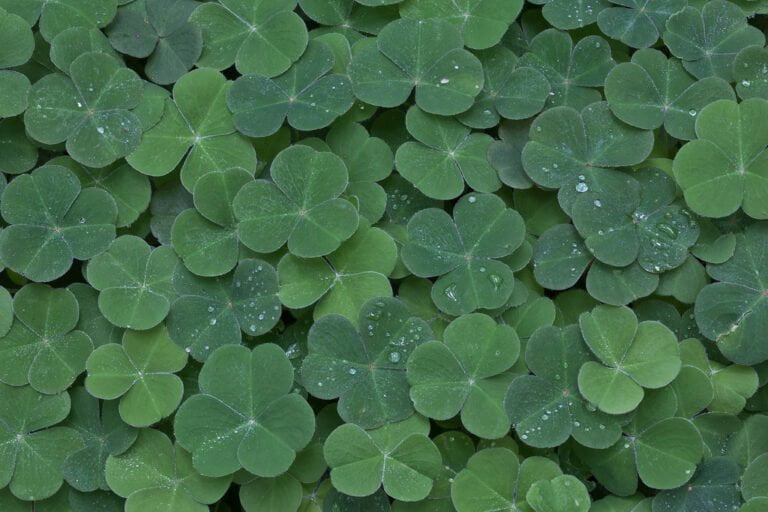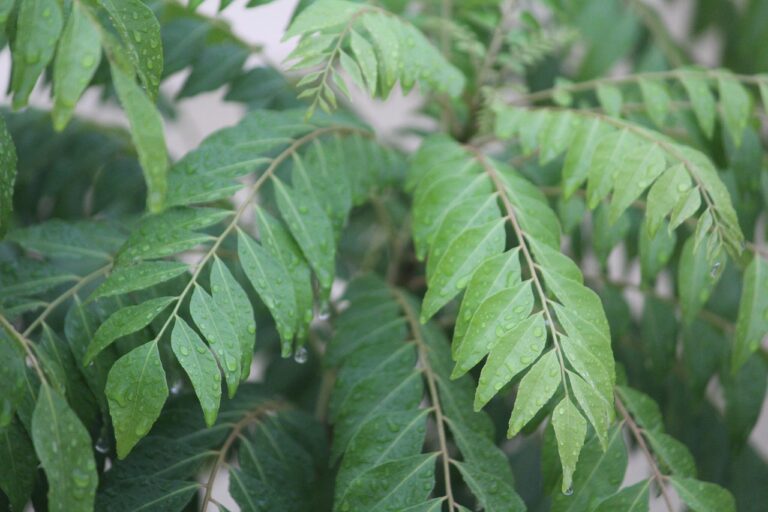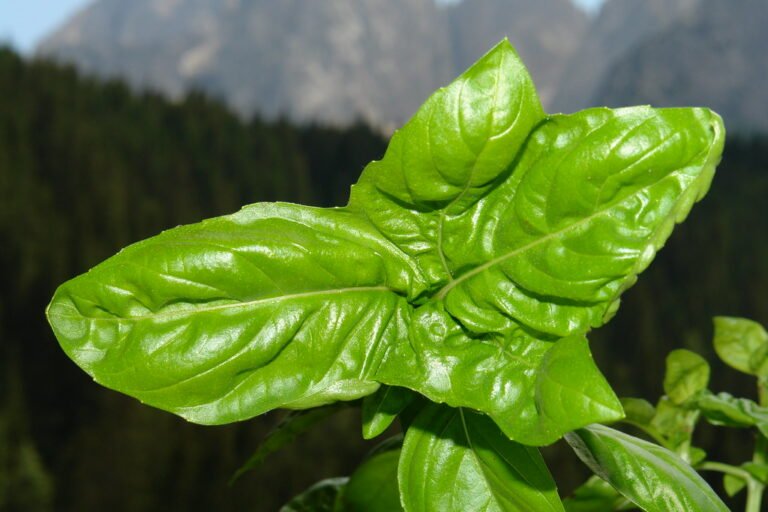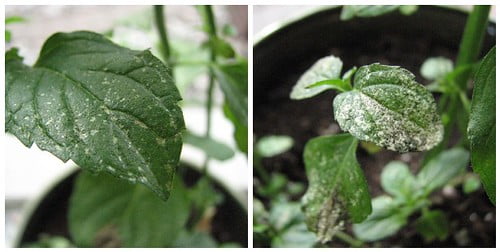Vietnamese Coriander (Rau RăM)
If you're looking to spice up your culinary ventures, Vietnamese coriander, also known as rau răm, is a must-have addition to your herb garden. This vibrant plant boasts a unique flavor profile, with hints of citrus and spice, perfect for adding depth to your dishes. Whether you're a novice cook or a seasoned chef, rau răm is a versatile and easy-to-grow herb that will elevate your meals to new heights. Get ready to impress your taste buds and your guests with this Vietnamese gem.
Botanical Information
Learn about the botanical information of Vietnamese coriander, also known as Rau Răm, and discover its classification, characteristics, and growing conditions. Rau Răm is a herb commonly used in traditional Vietnamese recipes, adding a distinct flavor and aroma to dishes like pho and spring rolls. Belonging to the Persicaria genus, it is classified as a perennial plant in the Polygonaceae family. This herb features slender, lance-shaped leaves with a vibrant green color and a slightly peppery taste. When it comes to growing conditions, Rau Răm thrives in moist, well-drained soil and prefers partial shade. It can be easily incorporated into your garden design, adding both culinary and aesthetic value. Consider planting it in containers, alongside other herbs, or as a ground cover in your garden beds.
Key Characteristics
As you explore the key characteristics of Vietnamese coriander (Rau Răm), you will discover its unique physical attributes and distinctive flavor profile. Vietnamese coriander has elongated leaves with pointed ends and a glossy, dark green color. Its leaves are slightly serrated and have a pungent aroma, similar to coriander and mint. The taste of Vietnamese coriander is described as a combination of cilantro and peppery spice, with a hint of citrus. This herb adds a fresh and vibrant flavor to dishes, making it a popular choice in various culinary applications. It is commonly used in Vietnamese, Thai, and Malaysian cuisines, in dishes such as soups, salads, stir-fries, and curries. Its flavor profile complements well with seafood, poultry, and vegetables, adding a refreshing and zesty twist to your meals.
Culinary Uses
To incorporate Vietnamese coriander (Rau Răm) into your cooking, consider its versatile culinary uses. This herb is commonly used in traditional recipes, adding a unique flavor profile to your dishes. Its taste is often described as a combination of cilantro and mint, with a slightly peppery kick. Vietnamese coriander can be used in various ways, such as in soups, stir-fries, salads, and marinades. Its leaves can be chopped and sprinkled over dishes as a garnish, or added during the cooking process to infuse the flavors. It pairs well with seafood, meat, and vegetables, adding a refreshing and fragrant touch to your meals. Experiment with this herb in your favorite recipes to discover its delightful taste and elevate your culinary creations.
Medicinal Properties
One significant medicinal property of Vietnamese coriander (Rau Răm) is its antioxidant capacity. Traditional remedies have long recognized the health benefits of this herb. Vietnamese coriander contains compounds such as phenolic acids, flavonoids, and tannins, which possess potent antioxidant properties. Antioxidants play a crucial role in neutralizing harmful free radicals in the body, which can cause oxidative damage and contribute to various diseases. By incorporating Vietnamese coriander into your diet or using it as a herbal remedy, you can enhance your body's natural defense against oxidative stress. This herb can help boost your immune system, reduce inflammation, and potentially lower the risk of chronic diseases such as heart disease, cancer, and diabetes. Adding Vietnamese coriander to your meals or preparing traditional remedies with it can provide you with these valuable health benefits.
Cultivation and Growing Conditions
To successfully cultivate Vietnamese coriander (Rau Răm), you will need to provide it with the appropriate growing conditions. When it comes to soil requirements, this herb prefers well-draining soil that is rich in organic matter. You can amend the soil with compost or aged manure to improve its fertility. Make sure the soil pH is between 6.0 and 7.0 for optimal growth. As for water requirements, Vietnamese coriander enjoys moist soil but not waterlogged conditions. Water the plant regularly, especially during dry periods, to keep the soil consistently moist. Avoid overwatering, as it can lead to root rot. By providing the right soil and water conditions, you can ensure healthy growth and abundant harvests of Vietnamese coriander.
Propagation
To propagate Vietnamese coriander, you will need to follow a simple and straightforward process. One of the most common methods is by taking stem cuttings from an existing plant. Start by selecting a healthy and mature plant with strong stems. Cut a 4-6 inch section of the stem just below a node. Remove the lower leaves, leaving only a few at the top. Dip the cut end in a rooting hormone to encourage root growth. Plant the cutting in a well-draining potting mix and water thoroughly. Place the pot in a warm and sunny location, ensuring it receives indirect sunlight. Mist the cutting regularly to maintain humidity. With proper care, the cutting should develop roots in a few weeks. The benefits of propagation include the ability to create new plants and expand your Vietnamese coriander collection.
Planting and Care
Once you have propagated Vietnamese coriander successfully, it is time for you to start planting and caring for your new plants. To ensure healthy growth, it is important to provide the right soil conditions. Vietnamese coriander prefers well-draining soil that is rich in organic matter. You can achieve this by mixing compost or well-rotted manure into the soil before planting. As for watering, Vietnamese coriander enjoys consistent moisture. Water the plants regularly, but avoid overwatering, as it can lead to root rot. A good watering schedule is to water deeply once a week, allowing the soil to dry slightly between waterings. Checking the moisture level with your finger can help determine when it's time to water. By providing the proper soil requirements and following a regular watering schedule, you will ensure the healthy growth and care of your Vietnamese coriander plants.
Harvesting
Now that your Vietnamese coriander plants have been properly cared for, it's time to move onto the next step: harvesting. Harvesting your Vietnamese coriander is a simple process that requires a few basic steps. First, inspect your plants for any signs of pests or diseases. If you notice any, take appropriate measures for pest control to ensure a healthy harvest. To harvest the leaves, simply cut them off from the stem using a sharp pair of scissors or pruning shears. It's recommended to harvest the leaves regularly to encourage new growth. Once harvested, you can store your Vietnamese coriander in a few different ways. You can wrap the leaves in a damp paper towel and place them in a plastic bag in the refrigerator for up to a week. Alternatively, you can freeze the leaves by chopping them up and placing them in an airtight container or freezer bag, where they can be stored for up to three months.
Companion Planting
When planting Vietnamese coriander, consider companion plants that will thrive alongside it. Companion planting is a gardening technique that involves planting different plants together to benefit each other. One of the main benefits of companion planting is pest control. Some plants, like marigolds, act as natural insect repellents and can help protect Vietnamese coriander from pests. Another benefit of companion planting is enhancing soil fertility. Plants like legumes, such as beans or peas, have nitrogen-fixing capabilities, which can improve the nutrient content of the soil for Vietnamese coriander. Successful companion planting combinations for Vietnamese coriander include planting it alongside basil, mint, or lemongrass. These plants not only provide a compatible growing environment but also enhance the flavors of Vietnamese coriander when used together in cooking.
Pests and Diseases
To protect your Vietnamese coriander from pests and diseases, it is important to implement proper preventative measures. Pest management is crucial in ensuring the health and productivity of your plants. Start by regularly inspecting your coriander for any signs of pests, such as aphids or caterpillars. If you spot any, you can manually remove them or use insecticidal soap to control their population. Another effective method is companion planting, which involves planting other herbs or flowers that repel pests. In terms of diseases, keeping the soil well-drained and avoiding overwatering can prevent root rot and fungal infections. If diseases do occur, there are treatment options available, such as using a fungicide or removing infected parts of the plant. By following these preventative measures and treatment options, you can ensure the health and vitality of your Vietnamese coriander.
Cultural Significance
To fully appreciate the cultural significance of Vietnamese coriander (Rau RăM), you should understand its role in traditional Vietnamese cuisine. In Vietnamese culture, food plays a central role, and the use of Vietnamese coriander in dishes is deeply ingrained in cultural traditions and traditional ceremonies. This herb is not only valued for its distinctive flavor and aroma, but also for its symbolic meaning. Vietnamese coriander is often used in dishes served during important occasions such as weddings, ancestral worship ceremonies, and Lunar New Year celebrations. Its presence on the dining table symbolizes prosperity, good fortune, and the connection between the living and the ancestors. Understanding the cultural significance of Vietnamese coriander adds a deeper appreciation to the herb's importance in Vietnamese cuisine and the role it plays in serving others.
Frequently Asked Questions
Can Vietnamese Coriander Be Used as a Substitute for Regular Coriander in Cooking?
Yes, you can use Vietnamese coriander as a substitute for regular coriander in cooking. It adds a unique flavor to traditional Vietnamese dishes and has health benefits such as aiding digestion and reducing inflammation.
Is Vietnamese Coriander Safe for Consumption During Pregnancy?
During pregnancy, it's important to consider safety concerns when consuming certain foods. While Vietnamese coriander has health benefits, it's best to consult with your healthcare provider to ensure it's safe for you.
How Long Does It Take for Vietnamese Coriander to Reach Maturity?
To determine how long it takes for Vietnamese coriander to reach maturity, consider cultivating techniques like providing well-drained soil, full sun, and regular watering. Once mature, you can use it in delicious recipes like soups, salads, and stir-fries.
Can Vietnamese Coriander Be Grown Indoors?
Yes, you can grow Vietnamese coriander indoors. It has numerous benefits, such as adding a unique flavor to your recipes. To do so, ensure it gets enough sunlight and water regularly.
Are There Any Specific Precautions to Take When Harvesting Vietnamese Coriander?
After harvesting Vietnamese coriander, there are a few precautions to keep in mind. Store the herb in a sealed container in the refrigerator to maintain freshness. Use sharp scissors to cut the leaves, avoiding any damage to the plant.
Conclusion
In conclusion, Vietnamese coriander, also known as rau răm, is a versatile herb with various culinary uses and medicinal properties. It can be easily grown in suitable conditions and harvested for its leaves, which add a unique flavor to dishes. When cultivated alongside other compatible plants, it can help deter pests and diseases. Vietnamese coriander holds cultural significance in Vietnamese cuisine and is a valuable addition to any herb garden or kitchen.





